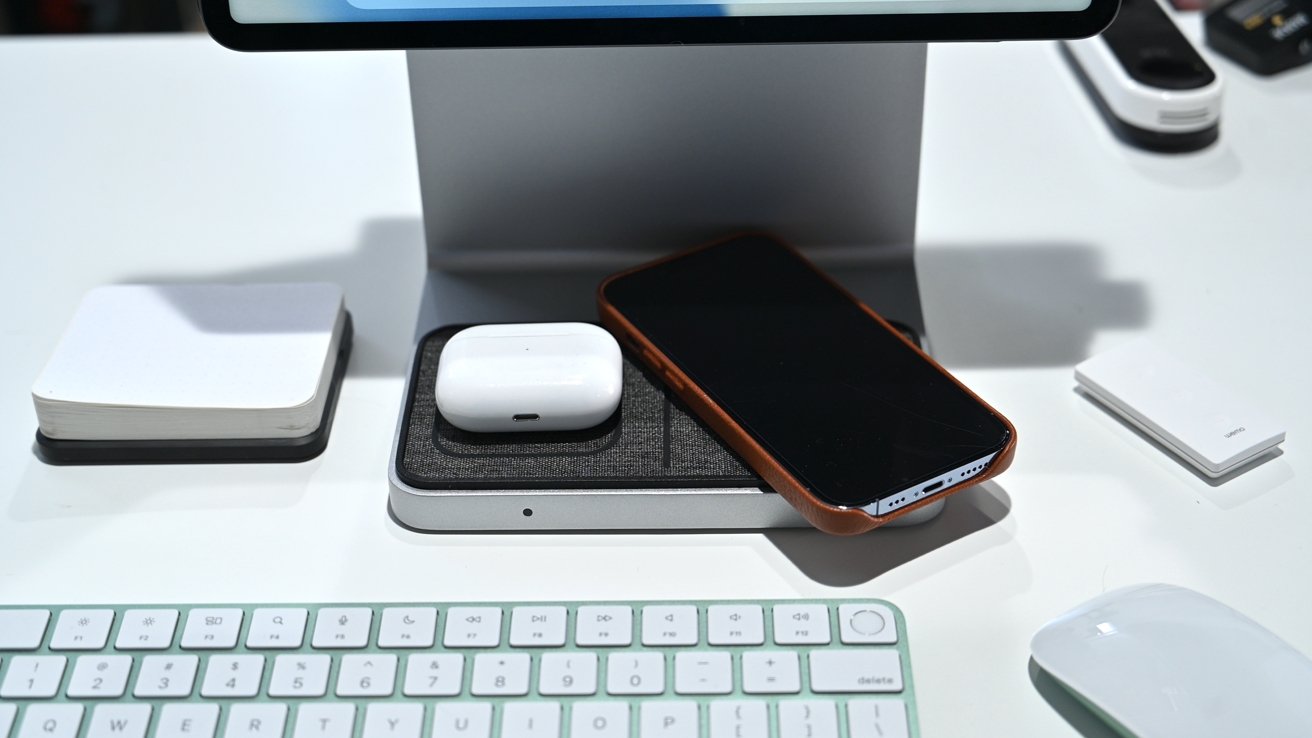Future HomePods, HomePod minis could have a total touch-sensitive fabric design with display : Apple World Today

[ad_1]
Currently, you press on the non-fabric covered top of an iPad or iPad mini to access the controls. However, future versions of the speakers could be totally wrapped in touch-sensitive fabric — and sport a semi-display.
Apple has filed for a patent (number 20210064167) for “displays in fabric-covered electronic devices.” In the filing data, the tech giant says electronic devices such as voice-controlled assistant devices may include fabric. As an example, the housing of a voice-controlled assistant device may be covered with a layer of fabric. Openings may be provided in the fabric to allow sound to be emitted from within the device.
However, Apple says it may be challenging to enhance the functionality of a voice-controlled assistant device. For example, it may be difficult to integrated light-emitting devices into a voice-controlled assistant device with a fabric layer. If care isn’t taken, the fabric may impart “an undesired appearance to emitted light or the light-emitting devices may be visible from a limited range of angles, thereby preventing a light-emitting device from effectively conveying information to a user.”
Naturally, Apple wants the HomePod and HomePod mini to look great. And, apparently, wants the speakers to be dressed in semi-transparent fabric that shows the play, pause, and skip buttons.
Here’s the summary of the patent filing: “An electronic device such as a voice-controlled speaker device may have a cylindrical shape with upper and lower ends that have surface regions of compound curvature. The electronic device may have a display formed form an array of light-emitting devices such as light-emitting diodes. To provide the display with desired curvature (such as compound curvature), the display may be thermoformed.
“A flexible substrate for the display may be attached to a separate thermoplastic substrate. During a thermoforming process, the display may be heated such that the thermoplastic substrate softens into a pliable state. The display may then be molded into a desired shape. The display is then cooled to harden the thermoplastic substrate and secure the flexible substrate and light-emitting diodes in the desired shape. The thermoformed display may be stacked with additional functional layers such as a thermoformed touch-sensitive layer and/or a thermoformed lens layer.”
[ad_2]
Source link


